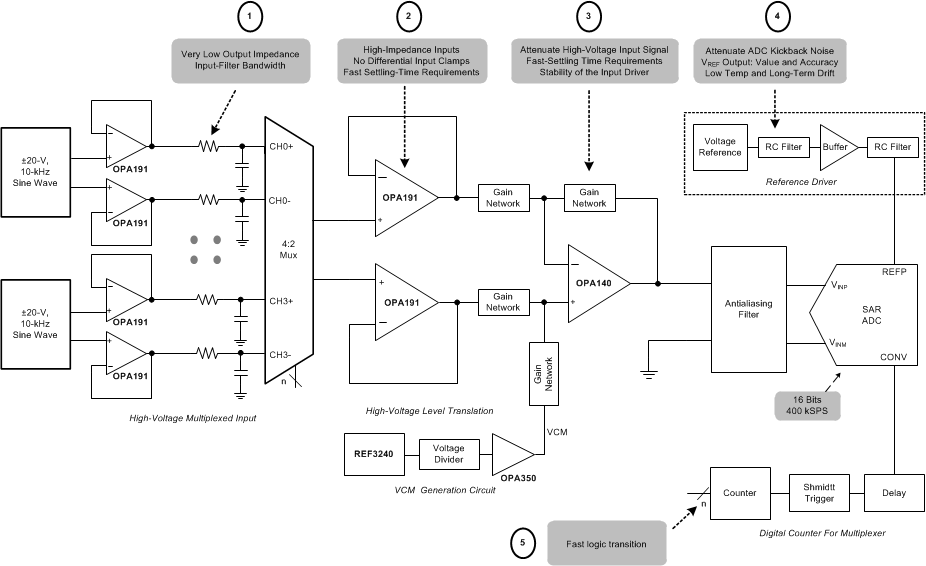SBOS701D December 2015 – August 2021 OPA191 , OPA2191 , OPA4191
PRODUCTION DATA
- 1 Features
- 2 Applications
- 3 Description
- 4 Revision History
- 5 Pin Configuration and Functions
-
6 Specifications
- 6.1 Absolute Maximum Ratings
- 6.2 ESD Ratings
- 6.3 Recommended Operating Conditions
- 6.4 Thermal Information: OPA191
- 6.5 Thermal Information: OPA2191
- 6.6 Thermal Information: OPA4191
- 6.7 Electrical Characteristics: VS = ±4 V to ±18 V (VS = 8 V to 36 V)
- 6.8 Electrical Characteristics: VS = ±2.25 V to ±4 V (VS = 4.5 V to 8 V)
- 6.9 Typical Characteristics
- 7 Parameter Measurement Information
- 8 Detailed Description
- 9 Application and Implementation
- 10Power Supply Recommendations
- 11Layout
- 12Device and Documentation Support
- 13Mechanical, Packaging, and Orderable Information
Package Options
Mechanical Data (Package|Pins)
Thermal pad, mechanical data (Package|Pins)
- RUM|16
Orderable Information
9.2.2 16-Bit Precision Multiplexed Data-Acquisition System
Figure 9-4 shows a 16-bit, differential, 4-channel, multiplexed, data-acquisition system. This example is typical in industrial applications that require low distortion and a high-voltage differential input. The circuit uses the ADS8864, a 16-bit, 400-kSPS successive-approximation-resistor (SAR), analog-to-digital converter (ADC), along with a precision, high-voltage, signal-conditioning front-end, and a 4-channel differential multiplexer (mux). This application example shows the process for optimizing the precision, high-voltage, front-end drive circuit using the OPA191 and OPA140 to achieve excellent dynamic performance and linearity with the ADS8864. The full design can be found in TI Precision Design TIPD151, 16-Bit, 400-kSPS, Four-Channel MUX Data Acquisition System for High-Voltage Inputs.
 Figure 9-4 OPA191 in
16-Bit, 400-kSPS, 4-Channel, Multiplexed Data Acquisition System for
High-Voltage Inputs With Lowest Distortion
Figure 9-4 OPA191 in
16-Bit, 400-kSPS, 4-Channel, Multiplexed Data Acquisition System for
High-Voltage Inputs With Lowest Distortion